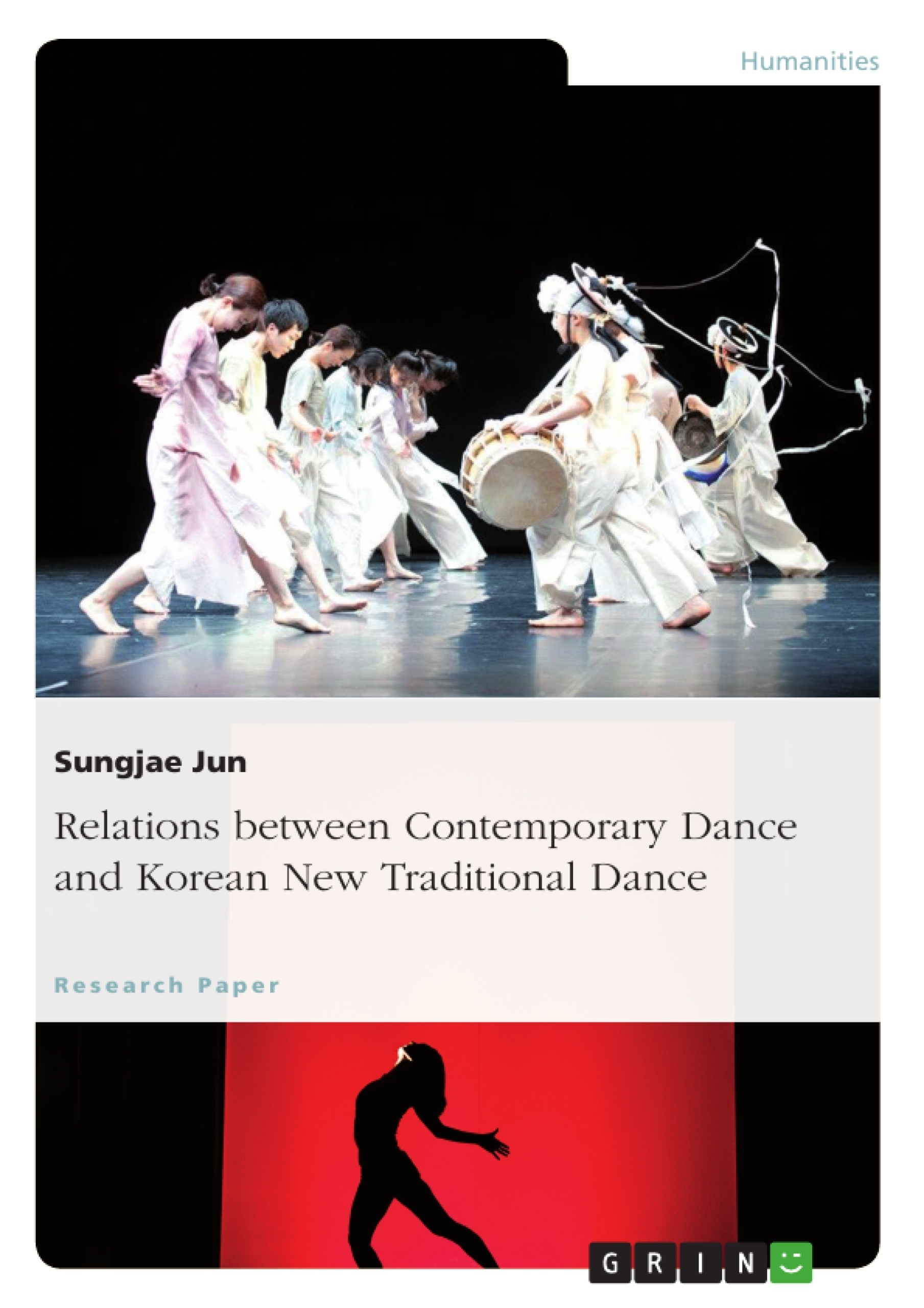Have you ever asked yourself, which relations there are between Korean New Traditional Dance and Contemporary Dance?
Traveling all around the world, people are watching me with big eyes as soon as I speak about my dance career. Many of them, even artists, ask me, which are the relations between Contemporary Dance and Korean New Traditional Dance.
There is always a question mark on the face of people, when I try to explain that the Korean Dance, for example Korean Ballet or Korean Modern Dance, are related to Contemporary Dance. It is difficult for them to understand the subject at first. For many people, regard to the content of the Contemporary Dance is either an abstract subject or only an American art of Dance.
With this small contribution I want to show the importance of Korean Dance generally and its relations to worldwide Dance. This book should even show the similarities between Korean New Traditional Dance and Contemporary Dance today. It is supposed to give answers to all my friends and colleges, who ask themselves: what are the differences and similarities of these dances?
[The author is no native speaker.]
Inhaltsverzeichnis (Table of Contents)
- ABSTRACT
- TABLE OF CONTENTS
- TABLE OF FIGURES
- ACKNOWLEDGMENTS
- INTRODUCTION
- CHAPTER 1: KOREAN TRADITIONAL DANCE
- I. PERFORMING ART
- II. DANCE STORY IN KOREA
- III. TYPES OF KOREAN DANCE
- 1. COURT DANCE
- 2. FOLK DANCE 민속무용
- 3. RITUAL DANCE 의식무용
- 4. NEW TRADITIONAL DANCE
- CHAPTER 2: CONTEMPORARY DANCE
- I. DEFINITION OF DANCE
- II. THE PHILOSOPHY OF DANCE
- III. THINKING OF DANCE
- IV. DANCE STORY IN ANCIENT
- V. PERFORMANCE AND PARTICIPATION
- VI. CONTEMPORARY DANCE
- VII. MODERN DANCE
- CHAPTER 3: THE RELATION BETWEEN CONTEMPORARY DANCE AND KOREAN NEW TRADITIONAL DANCE
Zielsetzung und Themenschwerpunkte (Objectives and Key Themes)
This work explores the relationship between Contemporary Dance and Korean New Traditional Dance, examining the historical and cultural influences that have shaped these forms of dance. The text aims to highlight the interconnectedness of these two dance styles, demonstrating that Korean New Traditional Dance has played a significant role in the development of Contemporary Dance.
- The evolution of Korean Traditional Dance and its various forms
- The impact of cultural globalization on dance forms
- The influence of Korean New Traditional Dance on Contemporary Dance
- The historical context of dance development in Korea and its relationship to global trends
- The role of individual artists and movements in shaping dance traditions
Zusammenfassung der Kapitel (Chapter Summaries)
Chapter 1 focuses on Korean Traditional Dance, providing an overview of its history, different types, and its role in Korean culture. It explores the evolution of dance forms from ancient shamanistic practices to the development of court dance, folk dance, ritual dance, and New Traditional Dance.
Chapter 2 delves into the world of Contemporary Dance, examining its definition, philosophy, and historical development. It explores the influence of non-Western dance cultures, including Japanese Butoh, on Contemporary Dance and analyzes the relationship between performance, participation, and the evolution of dance forms.
Chapter 3 examines the connection between Contemporary Dance and Korean New Traditional Dance. It explores the historical context of Korean New Traditional Dance and its impact on the development of contemporary dance forms.
Schlüsselwörter (Keywords)
The main keywords and focus topics of this text include Korean Traditional Dance, New Traditional Dance, Contemporary Dance, cultural globalization, artistic influence, dance history, and the evolution of dance forms.
- Citation du texte
- Sungjae Jun (Auteur), 2015, Relations between Contemporary Dance and Korean New Traditional Dance, Munich, GRIN Verlag, https://www.grin.com/document/302294



